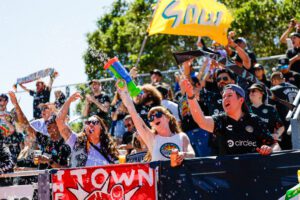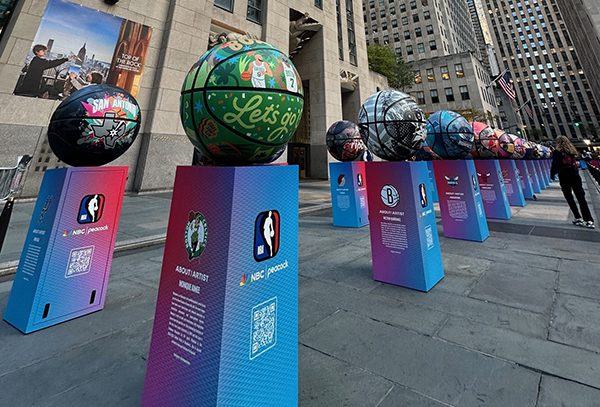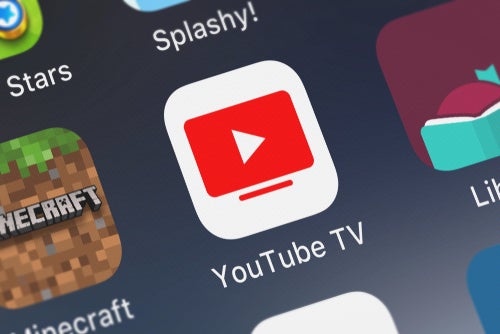 If your idea of getting in touch with your customers’ lives is firing up last year’s Holiday promotion, you’re missing out on the opportunities that come from tapping into the New World of shopper rhythms.
If your idea of getting in touch with your customers’ lives is firing up last year’s Holiday promotion, you’re missing out on the opportunities that come from tapping into the New World of shopper rhythms.
A revolution in data and new technology is shattering the current notion of what’s possible in targeted communication and allowing us to more accurately capture people’s ongoing behavior, building on and moving beyond well-known retail season milestones. Seeing and tracking rhythms is the beginning of a revolution in they way we talk to and think about our shoppers and customers.
Tracking rhythms
Chances are you are already capturing data with a greater degree of sophistication than in the past. Panel data provides us a diary of consumer behavior. Scanner data puts us into the basket of shoppers. Sophisticated modeling allows us to see into the nature of the shopping trip. State-of-the-art register systems plot item purchases to the minute. Retailers are training their associate and sales staffs to profile incoming customers. We can even track where people move with mounted infrared cameras.
And now shoppers are sharing freely their daily rhythms, habits and relationships through social media platforms like Foursquare, Facebook and Google Places.
We can identify shopper rhythms over the course of a month, a week, a day, or even a single retail visit. And thanks to the latest in communication technology, in retail, database, mobile, and out-of-home, we can now also connect our communication plans to those faster-paced rhythms as well.
Getting started
Tapping into shopper rhythms requires a hard look at your marketing objectives. What are the challenges in reaching your customers? Does their behavior significantly differ over time, and if so how? Is it worth the investment to build out the systems required to make the personal connection? The answer more often than not is “yes,” but building the outputs without a thorough understanding of the inputs is a recipe for confused messaging, as well as questionable return-on-investment.
What are the tools you need to get started? A way to track shopper purchase and behavior is key to tapping into rhythms—start with registers, what is going out at what time, on what days? Suppliers, vendor relationships (e.g., Catalina) all can help identify rhythms. We typically know our seasonality; we need to turn our attention to more discrete timeframes.
Once you’ve identified the rhythms, you need to tap into it. What channels do you have, both within the retail environment and beyond, that can put out a customized message by day part, day of week, month? The following technologies work well and should be on most marketers’ short list.
Digital signage
The thing of the moment in retail is digital technology. Digital signage allows us to customize messages throughout the day, i.e., “day parting”. Long a staple in the restaurant industry, day parting messages has now become a normal part of the retailer’s repertoire. Imagine the potential of creating a more emotional opportunity in the mid-morning and an immediate driver during rush hours.
The power of digital signage is to carry essentially unlimited amounts of communication, not restricted by mechanical limitations of surface area or rotation. Of course, this unlimited messaging is also one of its greatest weaknesses, as it requires a more disciplined approach to communication. Current applications include video menu boards, digital P-O-P, and even fully developed in-store networks. Digital signage also requires a fair degree of infrastructure investment—software, displays, and a way to update information.
Grocery and big-box retailers have probably made the most progress here. Grocer Jewel-Osco leverages their proprietary in-store TV networks to address shoppers on-going need for different information where and when they are making their purchasing decisions.
Dynamic retail
Digital at retail still has a lot of growing up to do, particularly from an ROI standpoint, but innovative (and less expensive) retail and out-of-home dynamic options abound—rotating signage, scrollable menu boards, even sales staff scripting allow flexibility by time and season.
By utilizing lower tech solutions, dynamic retail is often reliant on staff to help implement, bringing in an additional level of required training. Like digital, dynamic retail requires that you look at your data ahead of time, following their rhythms—McDonald’s sets the bar here, examining when people stop eating eggs and start eating burgers. Building on their core in-store menu, they’ve also been testing rotating menu boards in their drive-through, the place where keeping up with the hectic rhythm of the on-the-go mom is even more important.
Dynamic response
Digital is more than display. The next evolution is dynamic response—we can tie register data directly to digital displays. Slow times can now be spent educating customers, and busy times shifts to a faster awareness of messages. Or reverse it, if your business has a lot of wait times—with customers lingering, bored and likely receptive to our message. Displays at order points can prompt real time add-on suggestions—“would you like to add a donut to your order?”—a technology that Dunkin’ Donuts has experimented with, delivering promotions and offers located at the decision point, with register displays, prompting add-ons based on the shoppers current order.
Implementing dynamic response is labor intensive and requires sophisticated software or vendor partners. Beyond the infrastructure requirements of digital mentioned above, it also requires a way to tie in sales data or traffic counts to the P-O-P display, as well as the algorithm to determine when it is time to change or adapt the messaging.
Mobile
The current frontier for connecting to shopper rhythms is mobile. While many companies have tried to crack the code, we have yet to see a viable mass solution emerge. Mobile is the most personal way to track people by time and place, and the way to reach them as well, using the emerging ubiquity of smart mobile devices and applications. The challenge here, like past “share of wallet” battles among credit, gift, and loyalty cards, is the coming “share of app & attention” wars with everyone fighting to get their tracking and offer widget onto customers’ smart device, as well as attention spans. Recent contenders include Groupon Now!, a location-aware limited-time notification pushed to your mobile with the Groupon app—a great example showing that not only can we respond to rhythms, we can also shape them.
We are already starting to see customers using mobile devices during shopping: price checking, information seeking, and comparison-shopping. The breakthrough is likely to come from an opportunistic retailer rather than a third-party vendor or app maker. The company that can tie the power of a database of shopper data and rhythms, with the power of a mobile outreach, will be the most likely winner.
Beyond the technologies discussed above, think about low cost adaptive media—radio, Internet—that can be easily changed to follow shopper rhythms as they go about their day.
People have always marched through life according to their own drummer—wake up, go to work, go to bed; go to work on Monday, TGIF, Saturday morning shopping; pay day; tax time, back-to-school, holiday season; and so on. But now the drums are laying down a new beat—and marketers would be wise to open their ears and play along with the new shopper rhythms.
Kevin Gilbert is chief planning officer at TRIS3CT. He can be reached at k.gilbert@Tris3ct.com.




